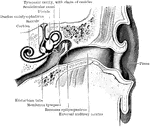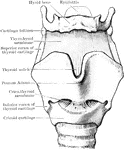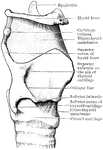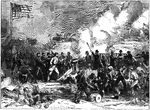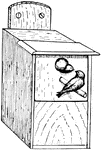
View from Rivière Aux Canards
Originally named Rivière aux Canards ("Duck River"), the River Canard community is home to one…
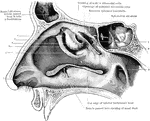
Outer Wall of Nose
View of the outer wall of the nose. The turbinated bones having been removed. Labels: 1, vestibule,…

Tympanic Ossicles
Tympanic ossicles of left ear. A, incus as seen from front. B, Malleus, viewed from behind. C, Incus…

Taste bud of Rabbit
A, Three-quarter surface view of taste bud from the papilla foliata of a rabbit. B, Vertical section…

York (Toronto) in 1813, From the Block House East of the Don
York is a community in Toronto, Ontario, Canada. Formerly a separate city, it was one of six municipalities…

Percussion Torpedo
The torpedoes used by the Confederates were various in form and construction. The most efficient ones…

Torpedo Net
The steam-vessels were protected by torpedo-nets formed of ropes weighted with iron or lead, and furnished…

Rall's Headquarters
Johann Gottlieb Rall (ca. 1726 - December 26, 1776 ) was a German colonel in command of Hessian troops…
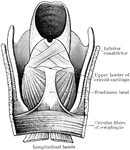
Pharynx and Esophagus
The lower part of the pharynx and the upper part of the esophagus have been slit up from behind, and…

Distended Stomach
Moderately distended stomach, viewed A, from in front; B, from inner or right side; and C, from the…

Blood Supply of Caecum and Appendix
The blood supply of the caecum and vermiform appendix. The illustration to the left gives a front view,…

Caecal Folds and Fossae
The caecal folds and fossae. In A, the caecum is viewed from the front; the mesentery of the appendix…

Liver from Front
The liver from the front, showing the superior, right, and anterior areas of the parietal surface.
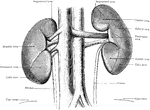
Kidneys from the Front
The kidneys and great vessels viewed from the front. The drawing was made before the removal of the…

Section Through Kidney
Longitudinal section through the kidney. The vessels and fat have been removed to give a view of the…

Bladder
View looking into the pelvis from above and somewhat behind. The bladder has been artificially distended.
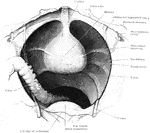
View of Male Pelvis Showing Bladder
View looking into the male pelvis from above and somewhat behind. From a specimen in which the bladder…

Outer Wall of Tympanic Cavity
View of the outer wall of the middle ear. Section through the left temporal bone of a child to show…

Inner Wall of Tympanic Cavity
View of the inner wall of the middle ear. Section through the left temporal bone of a child to show…
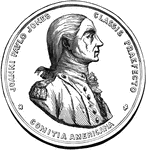
Medal Awarded to John Paul Jones (Front)
The Congressional Gold Medal awarded to John Paul Jones, America's first well-known naval fighter in…

View of Kenesaw from Pine Mountain
Kennesaw Mountain was the site of the Battle of Kennesaw Mountain during the 1864 Atlanta Campaign of…
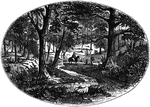
View at King's Mountain Battleground
The Battle of Kings Mountain, October 7, 1780, was an important Patriot victory in the Southern campaign…

Main Street, Dawson City, July 1897
A view of Main Street, Dawson City in the Yukon, Canada in July of 1897.

Battleground at Concord
"Battle ground at Concord. This view, looking southeast, is from the road leading to the village, by…
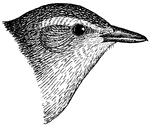
Warbling Vireo
The Warbling Vireo, Vireo gilvus, is a small songbird. Adults are 12 cm long and weigh 12 g. They are…
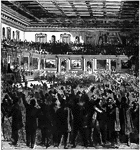
Passage of the Amendment to the Constitution Prohibiting Slavery
A view of Congress passing the amendment to the constitution prohibiting slavery.
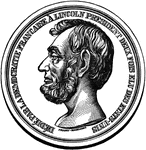
Lincoln Medal from French Democrats (Front)
Following Lincoln's assassination, French Democrats testified their appreciation of his character and…

Decatur's Medal, Front
Commodore Stephen Decatur, Jr (5 January 1779 – 22 March 1820) was an American naval officer notable…
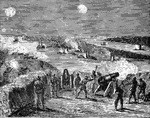
Porter's Fleet Shelling the Batteries Vicksburg
Union forces bombarded the city all night, from 220 artillery pieces and naval gunfire from Rear Adm.…
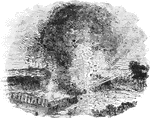
Blowing Up Fort Hill Bastion
As June wore on, Grant pressed the siege with vigor. Johnston tried to help Pemberton, but could not.…
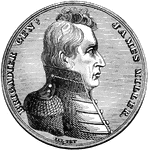
James Miller's Medal (Front)
In 1814, Miller was Colonel of the 21st Infantry Regiment and led his men in the capture of the British…

Scale Insect
"Scale-insect. Oyster-shell bark-louse of the apple (Mytilaspis pomorum); male. a, ventral view with…
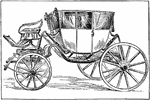
Washington's Coach
The coach that belonged to the first President of the United States, George Washington. A coach was…

Silver Medal Awarded to William Washington, Front
For his valor and victory at Cowpens, Washington received a silver medal awarded by the Continental…
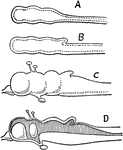
Brain, Vertebrate
Diagrams of the vertebrate brain. A, first stage, wit three brain vesicles; B, second stage; four brain…
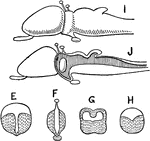
Brain, Vertebrate
Diagrams of the vertebrate brain. E, H, transverse sections of the brain at different levels. E, the…
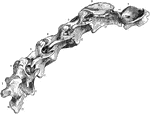
Horse Vertebral Column
Right lateral view of the cervical portion of the vertebral column of a horse. 1 to 7, the seven segments;…
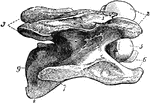
Cervical Vertebra of a Horse
Right lateral view of a cervical vertebra of a horse. Labels: 1, neural spine; 2, anterior oblique processes;…

Curlew Skull
"Schizorhinal skull of curlew (top view), showing the long cleft, a, between upper and lower forks of…
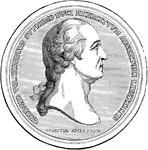
Washington's Congressional Gold Medal, Front
Since the American Revolution, Congress has commissioned gold medals as its highest expression of national…
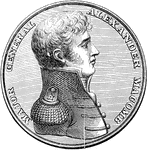
Macomb's Medal (front)
Following the Battle of Plattsburgh and the end of the War of 1812, a Congressional Gold Medal honoring…

View of Malden in 1861, where the British ships were built
Malden, on the Detroit River, was a place of great importance during the War of 1812. It is where the…
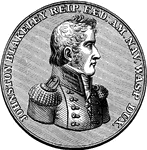
Johnston Blakeley's Medal (Front
Johnston Blakeley (October 1781 - October 1814) was an officer in the United States Navy during the…
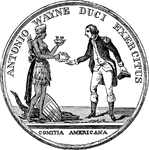
General Anthony Wayne's Gold Medal (Front)
Anthony Wayne (January 1, 1745–December 15, 1796) was a United States Army general and statesman.…

